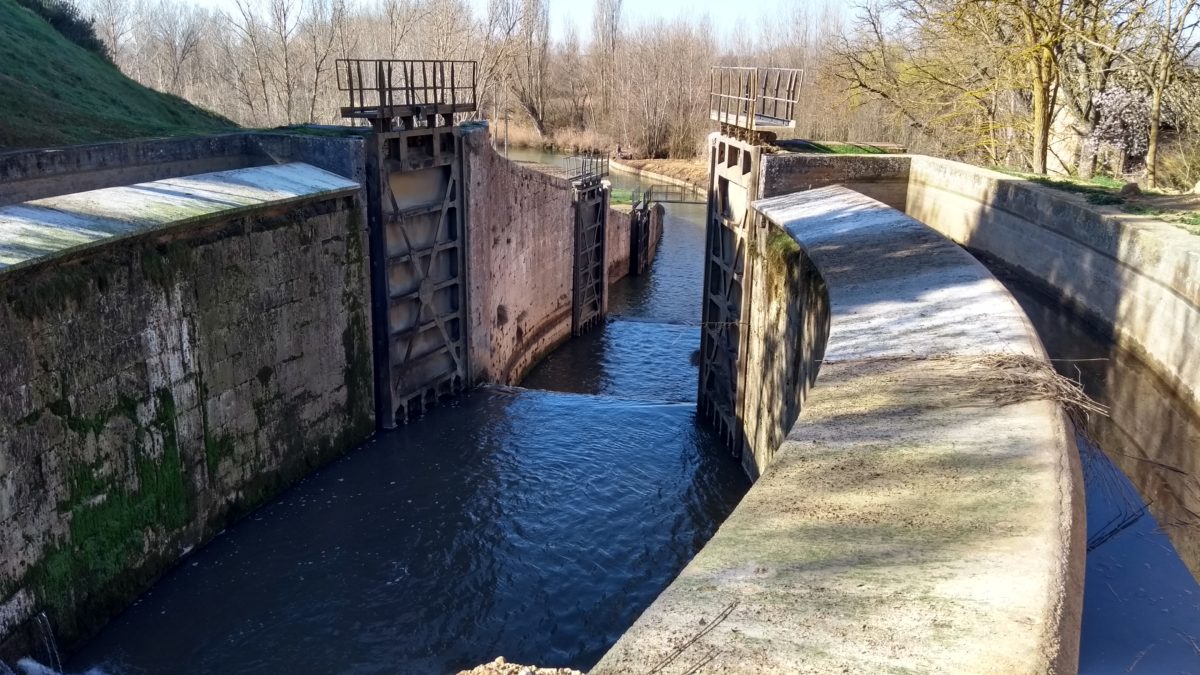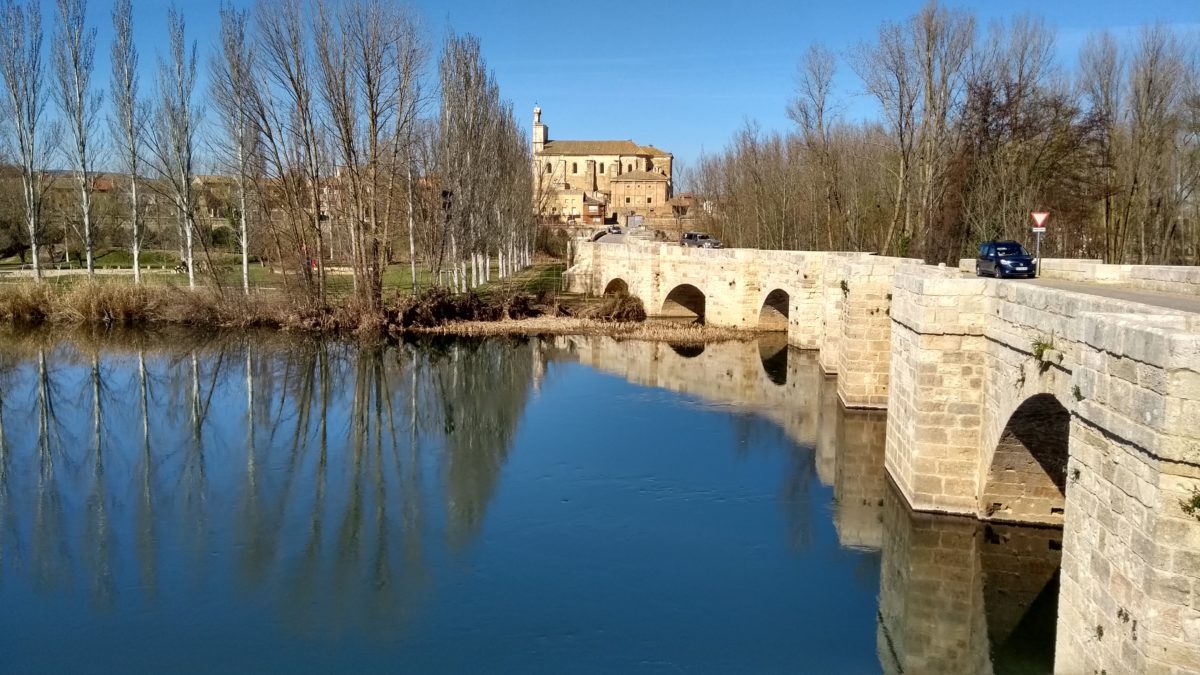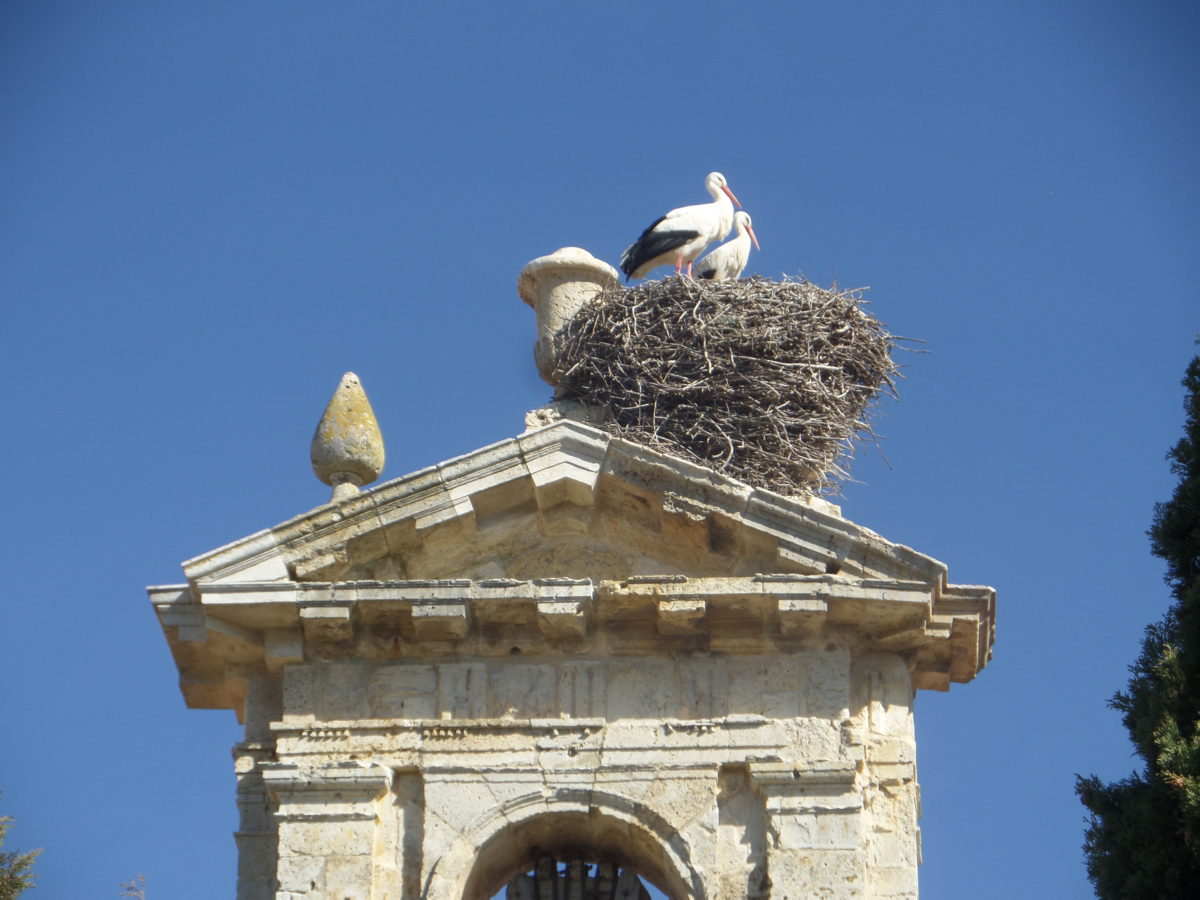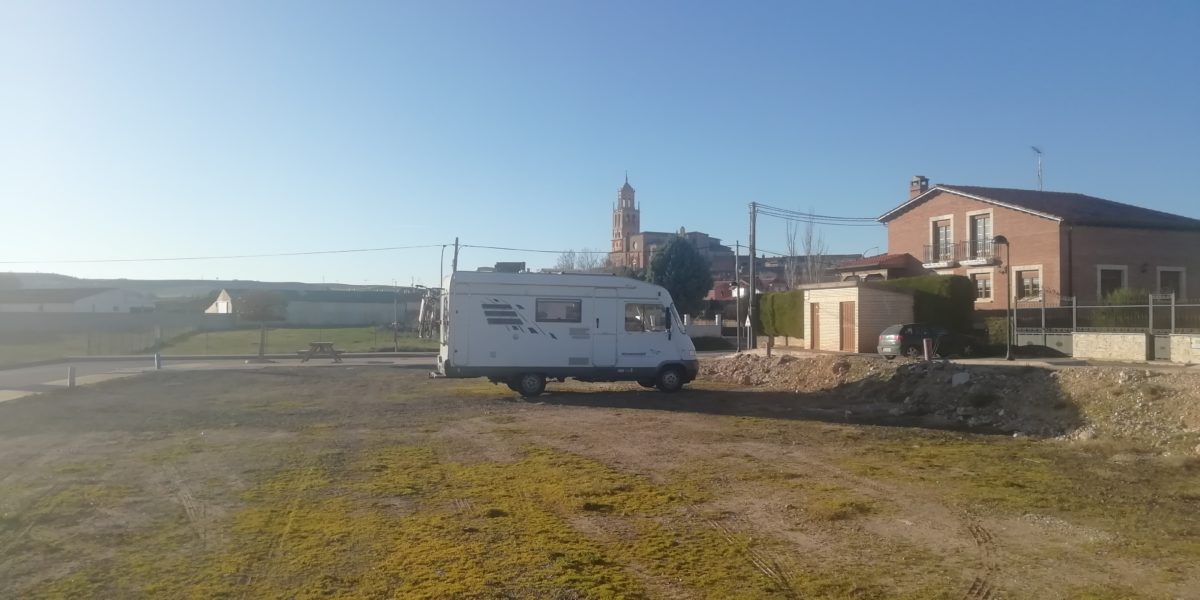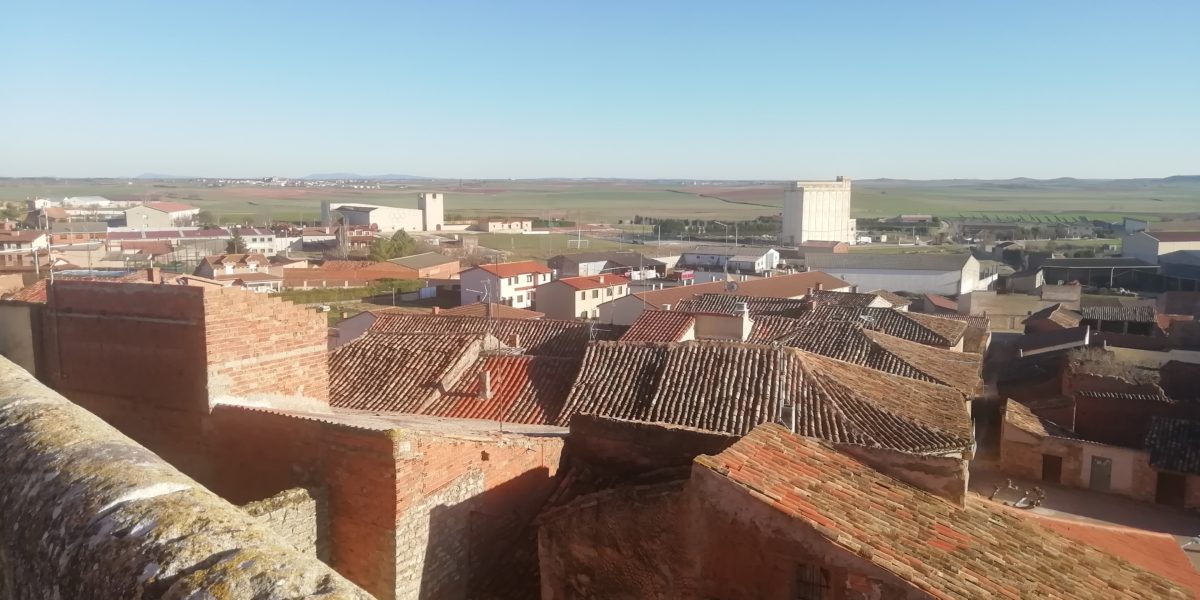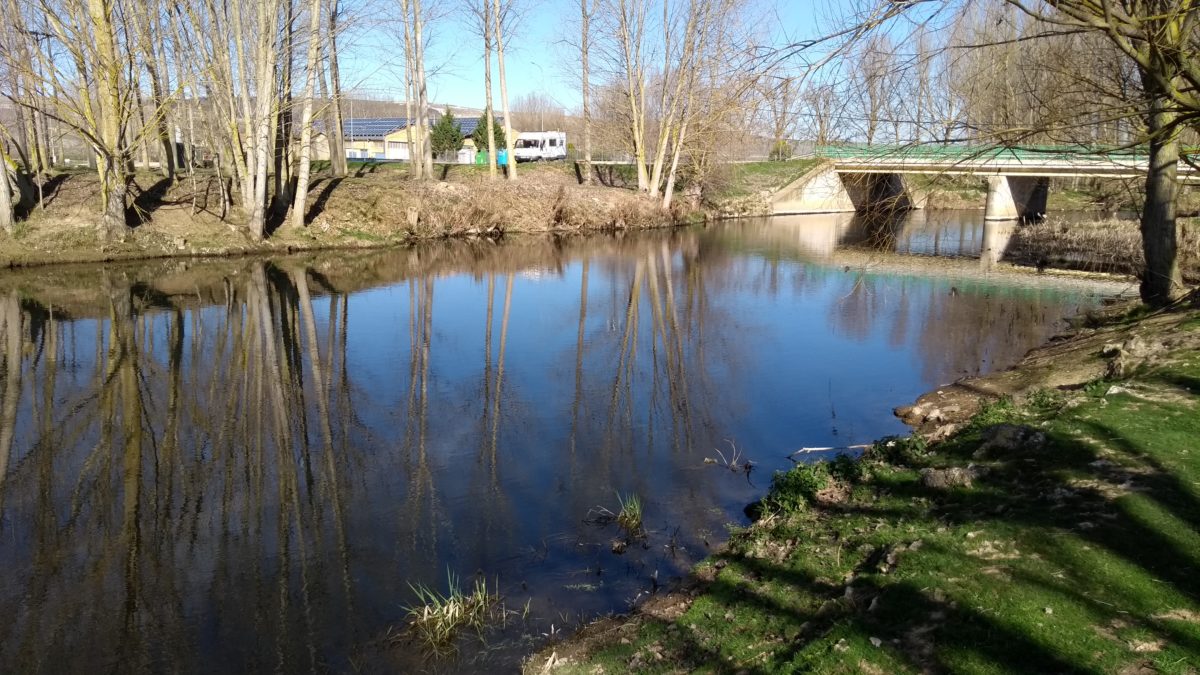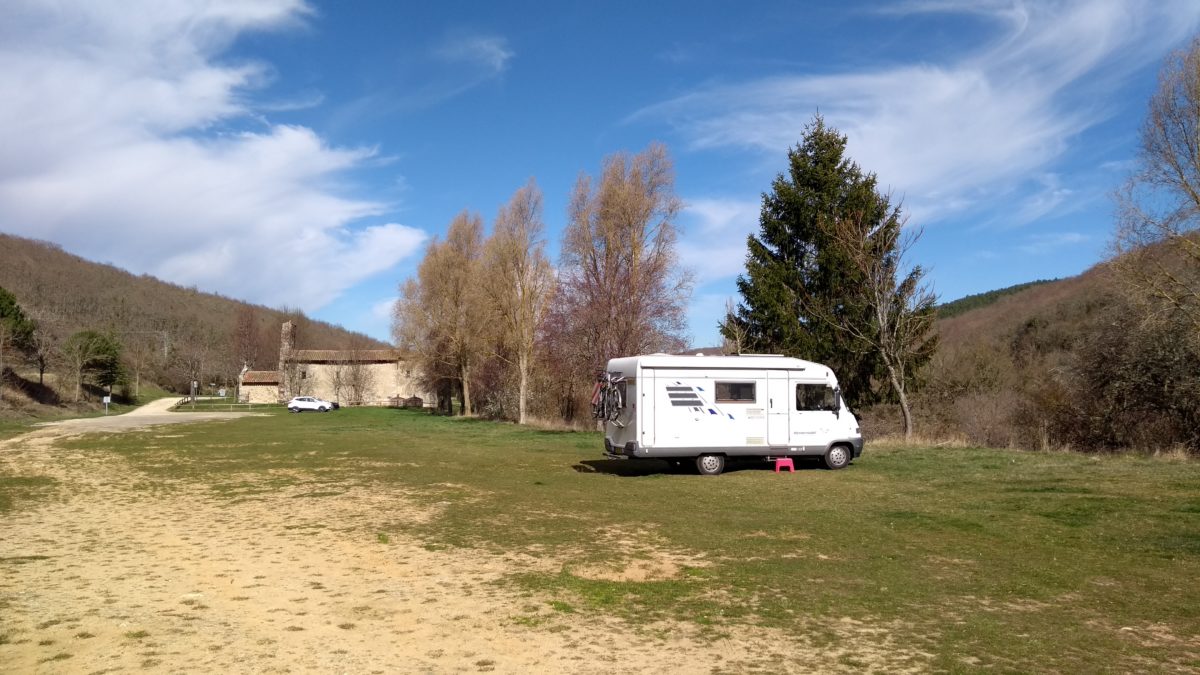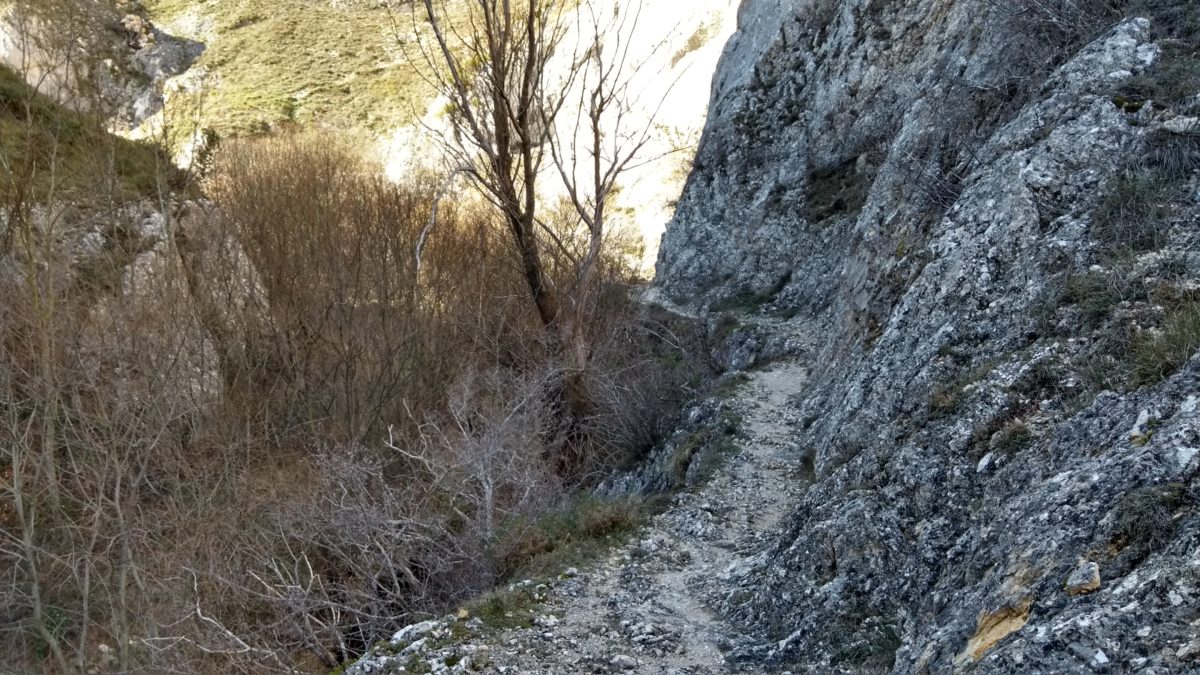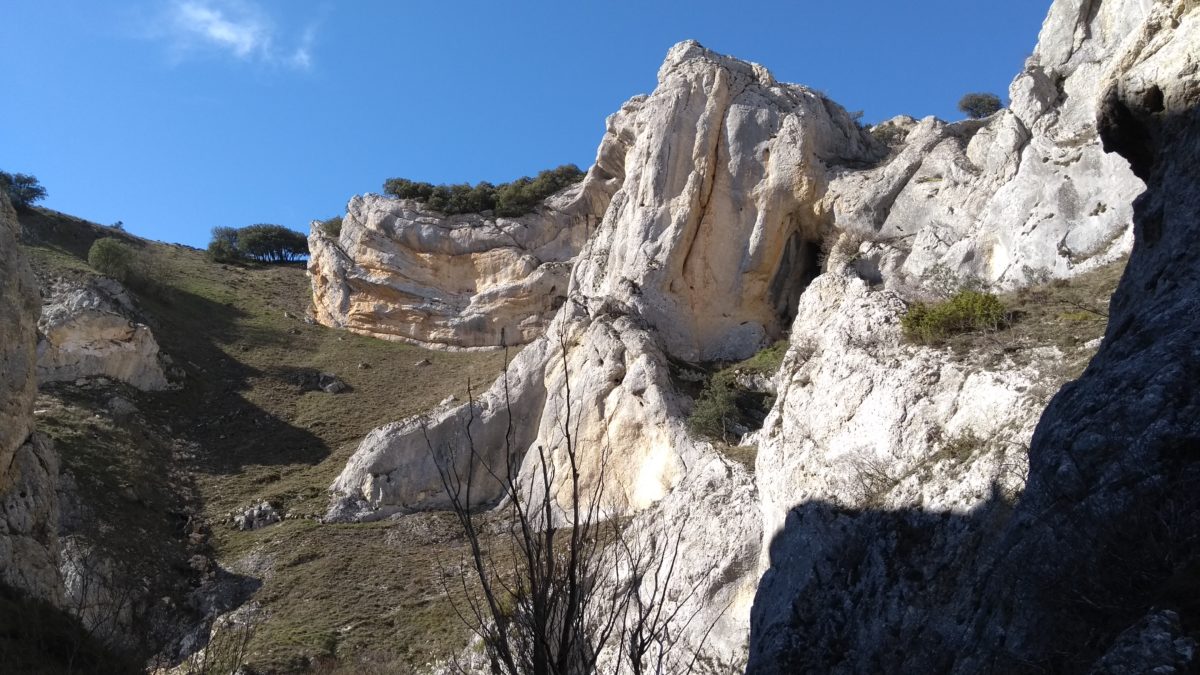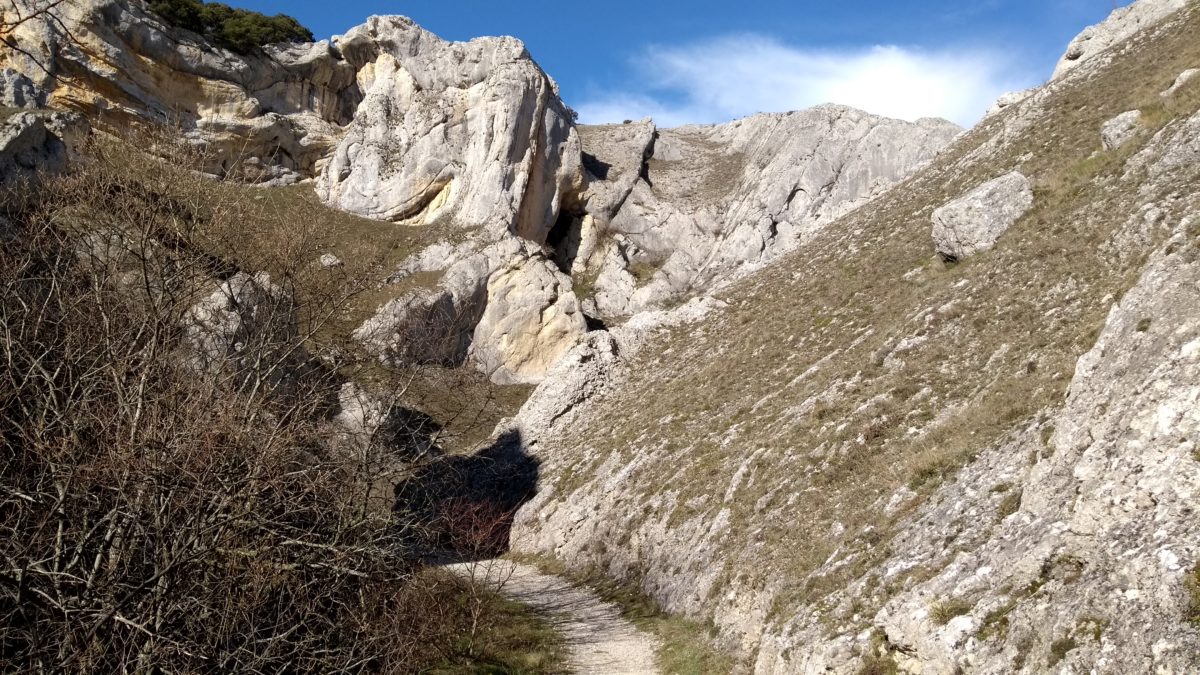Some of the best village ramparts in France
We stayed two nights in Ampudia. The big plan was to go and visit the castle when it opened on Saturday afternoon. This did not prove as easy as we had hoped. The visit is by guided tour only at 12:00, 13:00, 16:00 and 17:00 and we turned up at 14:00. We rather think the guided tour would be in Spanish and thus wasted on us so we decided to give it a miss and have another good walk around the village and a relaxed afternoon.
Sunday morning was quite frosty – the big dumpster was frozen and I had to break the ice to dump our rubbish! By the time we had serviced Bertie and were rolling the frost had pretty much gone. Once that sun comes up it is pretty strong quite quickly.
The next four days will be full on travelling days and our next “rest” day is Wednesday when we should be in Ansoain which is a suburb of Pamplona and our last Spanish stopover before we cross the Pyrenees and return to France.
Each day is planned around covering approximately 130kms with two stops for coffee and then for lunch. If possible I try and find somewhere interesting to stop so that we have something to visit or somewhere to walk.
Sunday worked out very well indeed with addition of a small detour around Palencia to fill up with really cheap diesel (92p per litre!!) at a Repostar garage on an industrial estate. Our coffee stop was at the old locks at Ribas de Campos where the canal descends through a stair of three huge locks. To find an actual proper canal in the middle of this huge, arid country was quite a surprise. Apparently the canal was started in 1753 as an ambitious plan to connect the grain producing plains to the port of Santander on the Bay of Biscay. The project never got that far as wars, lack of money and the Cantabrian Mountains got in the way and in 1849 they decided to call a halt to any further construction. The canal only really worked until 1870 when the railways took over and in 1959 it was closed for navigation. In 1991 it was declared that is was a an Area of Special Interest and protected from further decay.
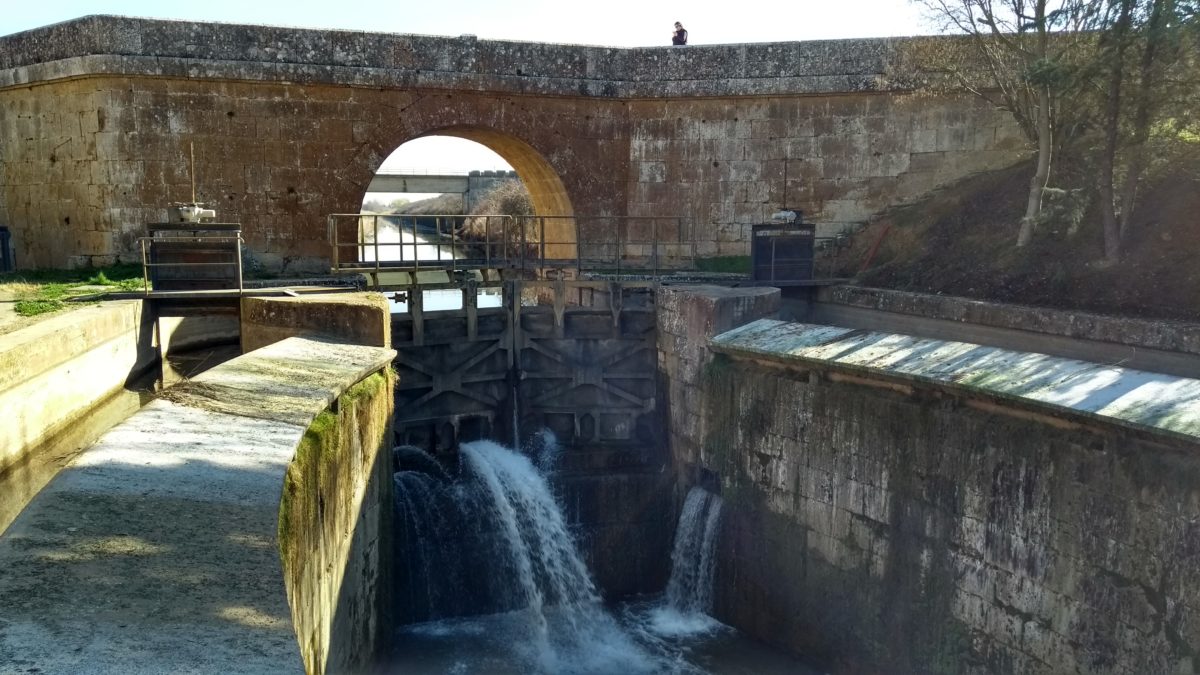
Anyway these locks were mentioned on several info boards in both Ampudia and earlier in Uruena since the local Tierra de Campos council are very keen to promote all their special places and with the help of Google I found that we were planning to go fairly near to these locks and thus a coffee stop was born!
Our lunch stop was also a water feature but of different kind! This was a medieval bridge across the Rio Pisuega at Torquemada. This small town was once a significant settlement with a huge church and this wonderful bridge. You may have heard the name of Torquemada as that infamous chap Tomas of Torquemada was linked with the town, he was the first Grand Inquisitor of the Spanish Inquisition. Not a period that Spain should be proud of. Anyway this little town has a huge bridge mostly built in the C15 and stretches 352m across the Rio Pisuerga and is still in use today. We parked at the aire on the edge of the town and walked to and across this impressive bridge. Finding that the town also hosted a large number of storks was a bonus. There were a pair nesting on the chapel belfry beside the aire and there were also at least 20 storks on the roof of the town church making quite a racket clacking their beaks.
Our stopover on Sunday night was an aire on the edge of Santa Maria del Campo – a souless bit of gravel beside the town sports centre. However we had it all to ourselves! I had a quick walk into town hoping to see the impressive church (only open on request and closed on Mondays).
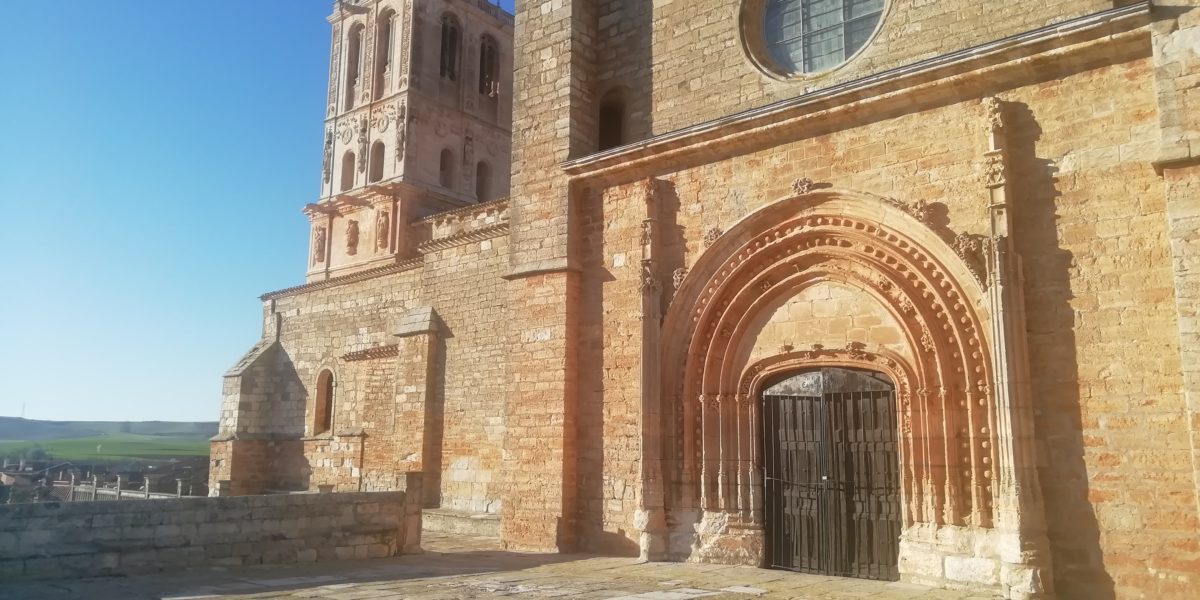
Monday morning was not quite so cold but still a slight frost. We were moving in good time and heading for a our first stop. This time I had found a little parking area by the Rio Arlanzon a few miles from Burgos. Nothing special but after all these months in semi-arid and arid lands we welcome any kind of running water. After a little stroll to look at the really clear water that was running quite swiftly we were on our way again. This time off to a Lidl on the edge of Burgos to get bread and stock up with goodies.
From Burgos we headed due east on the N120 and encountered some of the heaviest traffic we have seen for weeks and weeks. This standard two lane main road runs east/west from Vigo on the Atlantic to the Ebro Valley and it carries a lot of freight. We are not used to this much heavy traffic and Bertie was quite nervous with all these big butch trucks in a hurry from all over Europe (Poland, Portugal, Baltic States and even one or two with arabic plates from Morroco and Tunisia). We climbed up from Burgos and over the pass at 1150m (3772ft) and were impressed to see the road lined with snow poles – they must get it bad here sometimes.
There was quite a long drop down from the pass and at the bottom was a sharp bend with a 30kph (18mph) speed limit. Just past that bend we needed to make a very sharp righthand reflex turn on to a minor road which proved quite interesting with a big truck bearing down on us and finding that I needed to take two bites at it!! I had slowed right down, signalled right and pulled out hard against the white line but still did not quite make it round. I had to back up slightly which meant the bikes were still sticking out into the road. The nice truck driver behind me waited quietly and we were round quite quickly. I was releived to see that the car behind me also needed two bites to get round. This was the turning to our lunch stop that I had located on Park4Night. What we were heading for was an Ermita (chapel) and a picnic area just up the valley. The road was quite narrow and bumpy but not too long.
The little church was closed, as they so often are in Spain, but there was a large parking and picnic area with no noise at all from the big road that must have been above us somewhere. After lunch I was keen to explore the Desfiladero La Hoz that I seen a sign for. I could just see the rocks of the start of the gorge a little further up the valley and Google Maps suggested it was a short walk up a track. The track was OK but did not last beyond the beginning of the gorge where there were signs saying effectively “Dangerous path” and making it clear you proceed at your own risk. It was not suitable for Eileen as she finds rough going very challenging as her eyesight makes it hard to judge distances and get her footing. She decided to enjoy the little stream and explore the spring on the other side. I pressed on alone scrambling up the rocky path in to the gorge itself which was very dramatic with huge cliffs rising either side of the tiny stream. I did not get far before reaching the end of the path at a sign making it clear no-one could continue – a sign backed up by the huge concrete wall of dam that blocked the rest of the gorge!
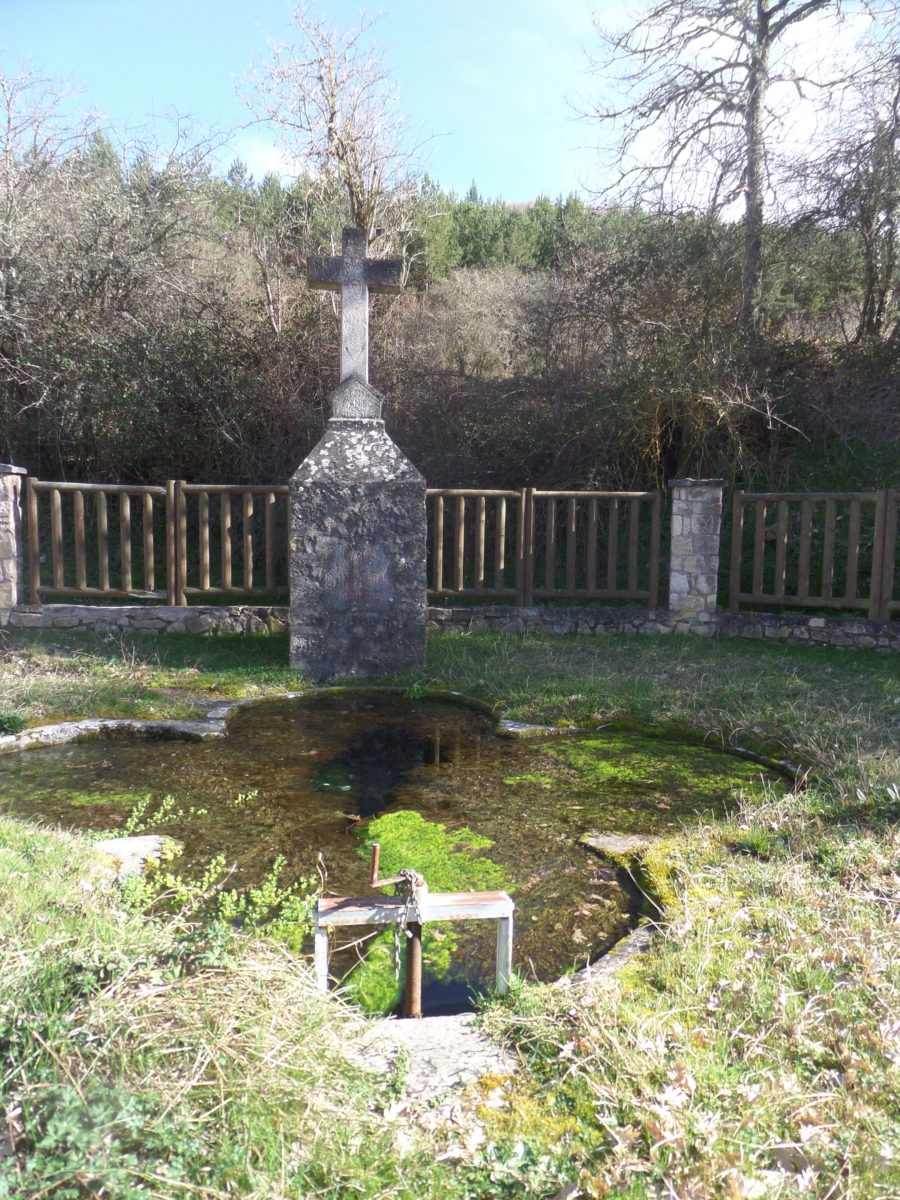
Our stopover tonight is in Cassalarreina in Rioja. The aire is at the Sports Centre on the edge of town which we have not explored. We are lower, at about 1,600ft, than we have been for a couple of weeks and thus it is a bit milder. However we have some climbing to do tomorrow on our way to Pamplona and when we leave there we climb up over the Pyrenees to France. It is good to be out of that huge plain and back amongst hills and mountains.















